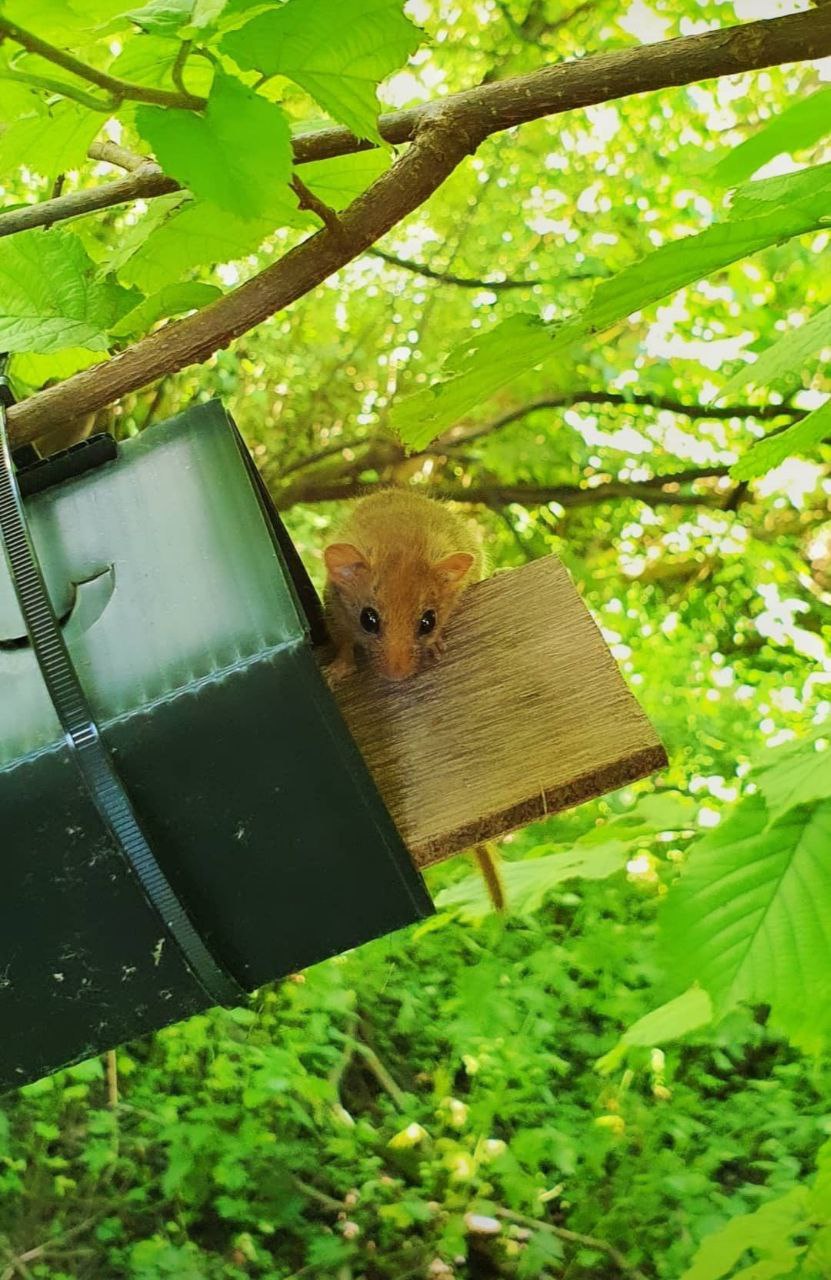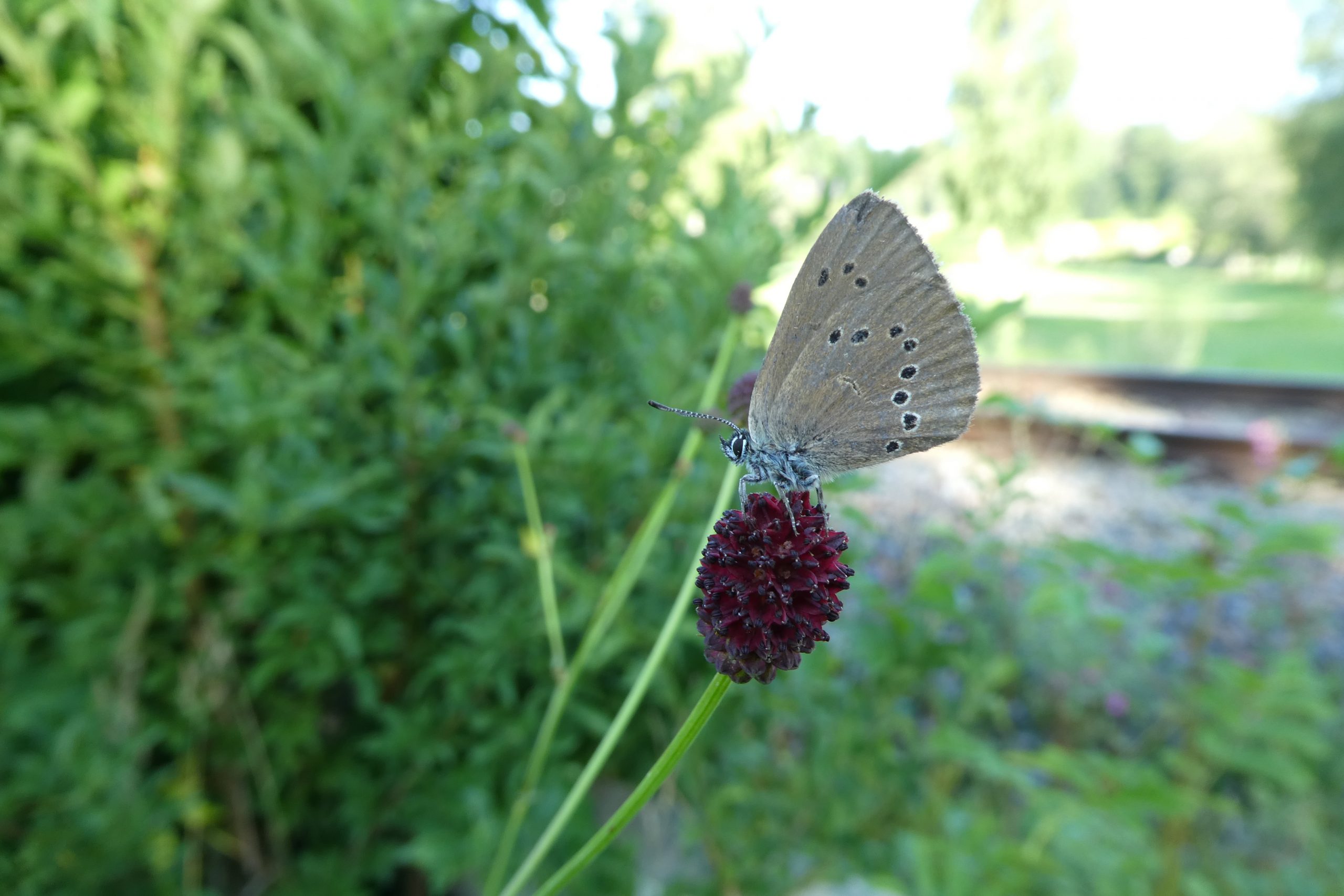Wildlife conservation is vital to biological diversity and preserving our ecosystem. DB Engineering & Consulting’s environmental planners are well aware of the important habitat railroad property provides for species such as lizards, the hazel dormouse and butterflies.

With biodiversity declining dramatically in recent years, the environmental experts at DB Engineering & Consulting are determined to make a difference. Right from the design phase of a project, they work on ways to look after the specially protected plants and animals that have made their home on railroad installations.
Biodiversity assessment begins before the building permit application process
The environmental planners examine what impact a project might have on protected species and document this in a special report. By using maps that record the presence of various animal and plant species over extended periods of time, they show which habitats are affected by the project. The planners use this information to decide what environmental measures are needed – e.g. environmental restoration of other sites to compensate for the project’s impact – and whether certain animals will need to be relocated. The aim is to design projects in harmony with the local flora and fauna. For some animals and plants, mapping is only allowed at certain times of the year. Sometimes our experts also locate animals by using special tools, such as nesting tubes for dormice.
Protecting individual species

Over 400 animal species and more than 50 plant species are under strict protection in Germany. DB E&C’s environmental experts look after species including the dormouse and the dusky large blue butterfly (Phengaris nausithous). The dusky large blue can be seen during its main flying period from mid-July to mid-August.
At an early stage of the project, the experts search the area for the great burnet (Sanguisorba officinalis), a plant with which the life cycle of the dusky large blue is closely entwined. This means that from mid-July onwards, when the weather is good, they can look for the butterflies on the great burnet flower heads. It is here that the dusky large blues lay their eggs. Caterpillars hatch, feeding first on the flowers and then dropping from the flower head to the ground. They mimic the scent of the red ant (Myrmica rubra) and trick the ants, which confuse the caterpillars with their own larvae, into taking them back to the ant nest. Here, they accept food from the ants until they pupate. The butterflies then hatch in July. The survival of this butterfly species thus not only depends on food sources but on the red ants that act as their host. Dusky large blues are often found in herbaceous margins along rail tracks, which is why this butterfly species is frequently part of the mapping, such as during this year’s track work in the Berchtesgadener Land.
A spherical nest in the scrub
Another species frequently studied by the environmental experts is the hazel dormouse (Muscardinus avellanarius). Like other dormouse species, hazel dormice are rodents of the gliridae family and, despite their name, are not actually mice at all. These nocturnal animals live very hidden lives, which is why little is known about their current distribution. The dormouse lives in wooded areas with a structurally rich shrub layer, where it finds sufficient food in the form of berries, nuts, flowers and occasionally insects.
To determine whether the species is present, special nesting tubes are hung from branches in the spring. Dormice love to build their nests here. During the regular inspections of the tubes between May and October, the dormouse is sometimes encountered “in person,” but the environmental experts can also identify this species from its typical spherical nests.

From October to April, the dormouse hibernates in a nest on the ground under leaf litter, in burrows, between tree roots or in brushwood. Contrary to what used to be thought, the species is not very sensitive to disturbance, and it also inhabits wooded areas along roads and rail lines. In the last few months, our environmental experts in Bavaria, for example, have been studying woodland near the Kirchberg Tunnel in the Altmühl valley.
Our staff all over Germany are committed to wildlife conservation. Next time you travel by train, keep your eyes peeled and you might even spot a dormouse. If you look closely, you will see that there is a lot going on along the rail line: many types of animals live right next to the tracks. It is important to us to interfere as little as possible in their lives. That is why our environmental planners ensure the protection of their habitat from an early stage of every construction project. We firmly believe that biodiversity is an asset worth protecting.





